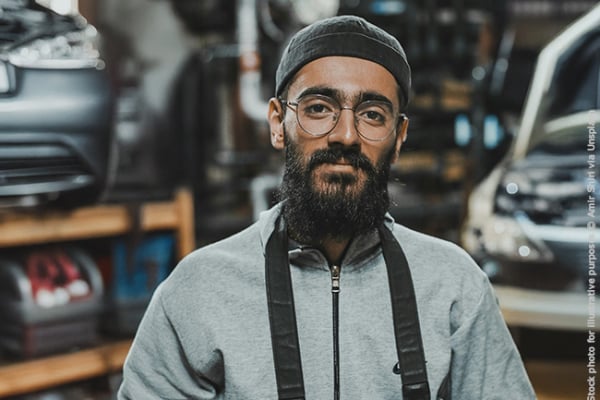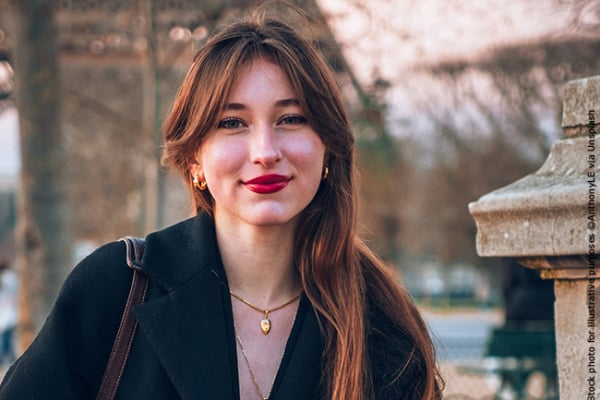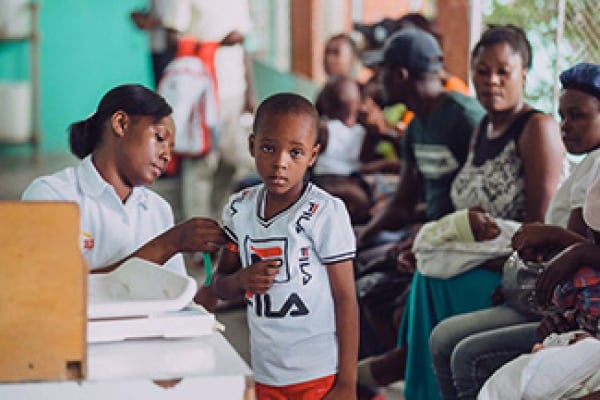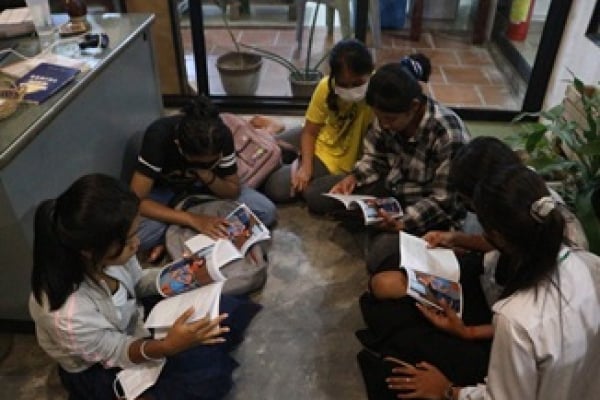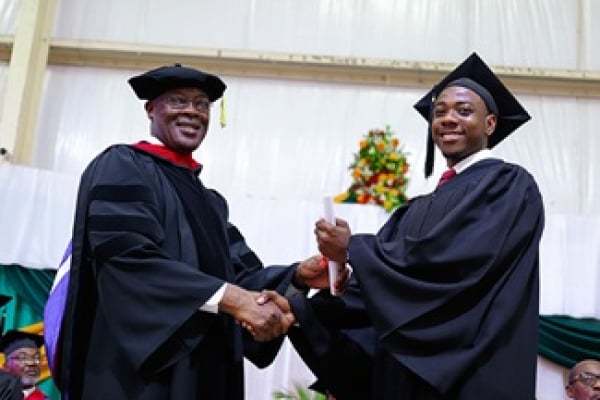December 10, 2014
The Hug That Waited 50 Years
KANSAS CITY, Mo. — Juan Tamayo held little Ruth on his lap with his left hand 50 years ago in Congo. With his right, he fired a .30-caliber machine gun to fight the eight rebel-guarded kilometers to the airport for evacuation. The 1964 Simba rebellion was tearing apart Congo — and the families of Crossworld (then UFM) workers. Little Ruth McAllister was only four years old that day. She, along with her father, mother, two brothers and several other UFM families had been living under house arrest at the mission station for several weeks while the Simba rebels wrested control of the country.
Then on Nov. 24, 1964, Belgian paratroopers arrived to free prisoners in Stanleyville (now Kisangani), eight kilometers away from the mission station. One of those prisoners was Al Larson, the UFM field leader for Congo. Knowing his friends and team members were still stranded at the mission station at Kilometer 8, Al rounded up the only available rescue team he could find: a small unit of CIA-commissioned Cuban exiles known as the Makasi, which means “strong” in Lingala.
Al and the Makasi jumped into nearby jeeps and made for Kilometer 8, gunning down anything that stood in their way. Unfortunately the rebels beat them. Just hours earlier, UFM worker Hector McMillan had been killed and three others wounded. When Al and the Makasi arrived, they gathered the survivors, who were hiding in the jungle in case the Simbas returned. Without pausing to exchange hellos, say thanks or even collect belongings, the group fled Kilometer 8 with little Ruth crouched on Juan’s lap.
Together, the UFM workers and Cuban soldiers fought their way through gunfire back to Stanleyville. They split ways at the evacuation plane and never saw each other again … until last month.
On Nov. 16, 2014, in Miami, Ruth stood face to face with Juan, her Cuban hero. Nearly 50 years to the day after the Kilometer 8 rescue, nine of the missionary children, including five of Hector McMillan’s sons, reunited with five of the Cuban soldiers who rescued them in 1964.
They struggled through the language barrier to swap stories and catch up on 50 years of life. Then a hush fell over the entire room as Carol McMillan, a granddaughter of Hector, addressed the Makasi in Spanish.
For 50 years, each person carried their own memories, unsure what had happened to the ones they left at the plane that day in Congo. For 50 years, Juan even wondered if his machine gun had deafened Ruth’s young ears. But after speaking to — and hearing — each other face to face, he said, “Now I can die in peace.”
Then on Nov. 24, 1964, Belgian paratroopers arrived to free prisoners in Stanleyville (now Kisangani), eight kilometers away from the mission station. One of those prisoners was Al Larson, the UFM field leader for Congo. Knowing his friends and team members were still stranded at the mission station at Kilometer 8, Al rounded up the only available rescue team he could find: a small unit of CIA-commissioned Cuban exiles known as the Makasi, which means “strong” in Lingala.
Al and the Makasi jumped into nearby jeeps and made for Kilometer 8, gunning down anything that stood in their way. Unfortunately the rebels beat them. Just hours earlier, UFM worker Hector McMillan had been killed and three others wounded. When Al and the Makasi arrived, they gathered the survivors, who were hiding in the jungle in case the Simbas returned. Without pausing to exchange hellos, say thanks or even collect belongings, the group fled Kilometer 8 with little Ruth crouched on Juan’s lap.
Together, the UFM workers and Cuban soldiers fought their way through gunfire back to Stanleyville. They split ways at the evacuation plane and never saw each other again … until last month.
On Nov. 16, 2014, in Miami, Ruth stood face to face with Juan, her Cuban hero. Nearly 50 years to the day after the Kilometer 8 rescue, nine of the missionary children, including five of Hector McMillan’s sons, reunited with five of the Cuban soldiers who rescued them in 1964.
They struggled through the language barrier to swap stories and catch up on 50 years of life. Then a hush fell over the entire room as Carol McMillan, a granddaughter of Hector, addressed the Makasi in Spanish.
“Today I speak with you as a representative of the descendants of those that were rescued. There are no words to express our thanks, but from the bottom of our hearts we want to express our gratitude for what you did 50 years ago. You cannot imagine the impact of your decision that day. It was an act in which you risked your lives for people you did not know. Even though my grandfather died before you were able to arrive, God allowed you to rescue the women and all the children who were prisoners in that house eight kilometers outside the city of Kisangani, thousands of kilometers from your home country, and thousands of kilometers from your country of refuge. That was not the mission you had planned to execute, but it was the mission that God had for you. Our sovereign God has a plan for each of us, and that day you played a part in that plan. Today, speaking as a representative of all those children, I can tell you that if it were not for you, we would not be alive today. We are eternally grateful for what you did that day. May God bless you greatly and compensate you in a way that none of us ever can.”
For 50 years, each person carried their own memories, unsure what had happened to the ones they left at the plane that day in Congo. For 50 years, Juan even wondered if his machine gun had deafened Ruth’s young ears. But after speaking to — and hearing — each other face to face, he said, “Now I can die in peace.”
More Articles
TOGO — A man prayed for 38 years for the church to come to his village.
August 6, 2025
CANADA — A routine maintenance visit leads to a search for eternal truth.
September 3, 2025
CENTRAL ASIA — A chemistry class assignment sparks questions of faith for Maya in Asia.
October 1, 2025
FRANCE — Lucie’s isolated faith turns to bold witness in her new community.
November 5, 2025
WEST ASIA — A Christmas gift melted Liliya’s desire for revenge.
December 3, 2025
.png)

 By Crossworld
By Crossworld
